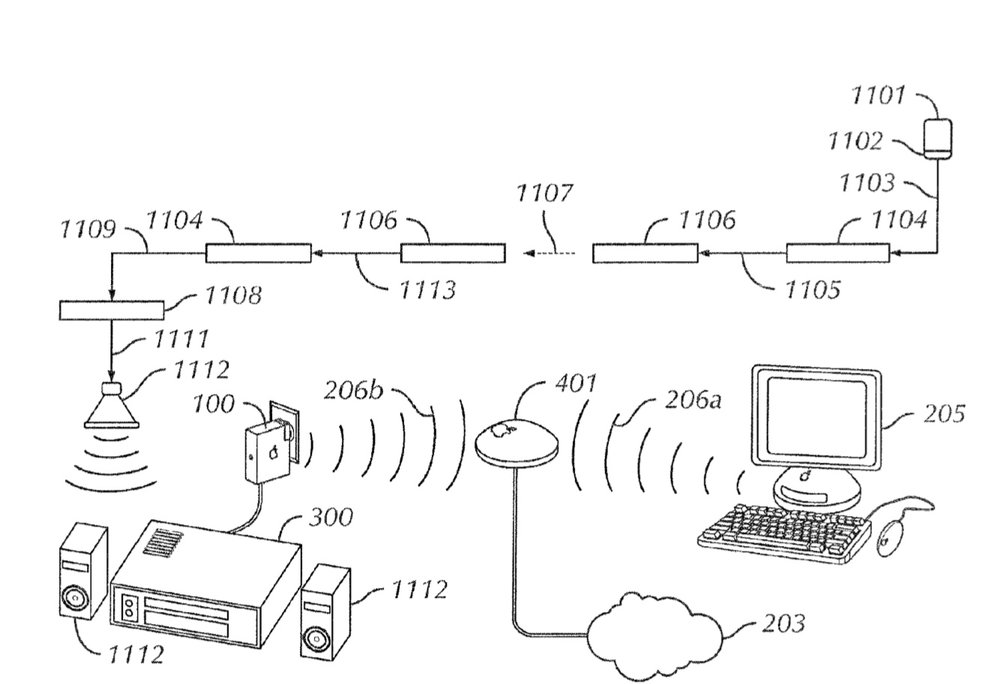Quit teasing us, Apple! The tech giant has been granted another patent (number 9,894,505) involving a home server (you can read about another one here. This one is dubbed “networked media station.”

It involves a networked media station that would provide features such as a wireless network interface, a wired network interface, a peripheral interface, and a multimedia interface. The wireless network interface(s) allows the device to communicate to serve as a wireless base station or repeater and/or a bridge between a wireless and a wired network.
The peripheral interface allows the device to communicate with a variety of peripherals, and, in conjunction with the network interface(s), allows sharing of a peripheral among multiple networked computers. The multimedia interface allows the device to be used with entertainment devices for streaming of multimedia information from a network connected computer to the entertainment device. Apple says control of various aspects of the device is preferably controlled from a network connected Mac.
In the patent filing, the tech giant notes that, with the increasing capacity and capability of personal computers, as well as improved multimedia interfaces for these computers, it’s become popular to use personal computers as a repository for multimedia content, such as songs, movies, etc.
Particularly with music, the increased popularity of storing multimedia information on a personal computer has resulted in a variety of products and services to serve this industry. Additionally, services have been developed around these devices, which allow consumers to purchase music and other multimedia information in digital form suitable for storage and playback using personal computers, including, of course, iTunes.
These products and services have resulted in an environment where many consumers use their personal computer as a primary vehicle for obtaining, storing, and accessing multimedia information. Apple says one drawback to such a system is that although the quality of multimedia playback systems for computers, e.g., displays, speakers, etc. have improved dramatically in the last several years, these systems still lag behind typical entertainment devices, e.g., stereos, televisions, projection systems, etc. in terms of performance, fidelity, and usability for the typical consumer.
Thus, Apple says it would be beneficial to provide a mechanism whereby a consumer could easily obtain, store, and access multimedia content using a personal computer, while also being able to listen, view or otherwise access this content using conventional entertainment devices, such as stereo equipment, televisions, home theatre systems, etc. Because of the increasing use of personal computers and related peripherals in the home, it would also be advantageous to integrate such a mechanism with a home networking to provide an integrated electronic environment for the consumer.

In addition to these needs, Apple says there’s also increasing interest in the field of home networking, which involves allowing disparate devices in the home or workplace to recognize each other and exchange data, perhaps under the control of some central hub. To date a number of solutions in this area have involved closed systems that required the purchase of disparate components from the same vendor. For example, audio speaker systems that allow computer-controlled switching of music from one location to another may be purchased as a system from a single vendor, but they may be expensive and/or may limit the consumer’s ability to mix and match components of a home network from different vendors according to her own preferences.
For these reasons, Apple says it would be beneficial to provide a mechanism by which various home networking components from differing vendors can interact in a home network environment.
Of course, Apple files for — and is granted — lots of patents by the U.S. Patent & Trademark Office. Many are for inventions that never see the light of day. However, you never can tell which ones will materialize in a real product.
